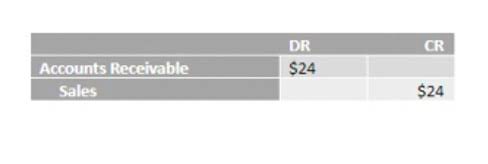
Our PRO users get lifetime access to our accounting equation visual tutorial, cheat sheet, flashcards, quick test, and more. This number is the sum of total earnings that were not paid to shareholders as dividends. It can be defined as the total number of dollars that a company would have left if it liquidated all of its assets and paid off all of its liabilities. Regardless of how the accounting equation is represented, it is important to remember that the equation must always balance. Want to learn more about recording transactions and doing accounting for your small business?
Owner’s Equity

Furthermore we can get the formula for calculating net-worth by rearranging the accounting equation as follows. In this situation the owners drawings represent cash taken out of the business by way of salary. Correspondingly in a company, the payment of a dividend to the equity owners replaces drawings in the expanded accounting equation. You can automatically generate and send invoices using this accounting software.

Which of these is most important for your financial advisor to have?
To prepare the balance sheet and other financial statements, you have to first choose an accounting system. The three main systems used in business are manual, cloud-based accounting software, and ERP software. As we previously mentioned, the accounting equation is the same for all businesses. It’s extremely important for businesses in that it provides the basis for calculating various financial ratios, as well as for creating financial statements. Notice that every transaction results in an equal effect to assets and liabilities plus capital.

What Is Shareholders’ Equity in the Accounting Equation?
A liability, in its simplest terms, is an amount of money owed to another person or organization. Said a different way, liabilities are creditors’ claims on company assets because this is the amount of assets creditors would own if the company liquidated. Now that we have a basic understanding of the equation, let’s take a look at each accounting equation component starting with the assets.
- The double-entry practice ensures that the accounting equation always remains balanced, meaning that the left-side value of the equation will always match the right-side value.
- Examples of assets include cash, accounts receivable, inventory, prepaid insurance, investments, land, buildings, equipment, and goodwill.
- The Accounting Equation is a vital formula to understand and consider when it comes to the financial health of your business.
- It’s called the Balance Sheet (BS) because assets must equal liabilities plus shareholders’ equity.
- In other words, the total amount of all assets will always equal the sum of liabilities and shareholders’ equity.
What Are Liabilities?
As you can see, no matter what the transaction is, the accounting equation will always balance because each transaction has a dual aspect. In these examples, you can see the dual nature of each transaction. Buying inventory means debiting the Inventory account and crediting basic accounting equation the Cash account. Selling goods means debiting the Cash account and crediting the Sales Revenue account. This method ensures the accounting equation stays balanced, with each transaction affecting at least two accounts – one in assets and one in owner’s equity.
- If a company’s stock is publicly traded, earnings per share must appear on the face of the income statement.
- The balance sheet reports the assets, liabilities, and owner’s (stockholders’) equity at a specific point in time, such as December 31.
- Therefore cash (asset) will reduce by $60 to pay the interest (expense) of $60.
- Shareholders’ equity is the total value of the company expressed in dollars.
- We’ll explain what that means, along with everything else you need to know about the accounting equation as we go on.
- If the net amount is a negative amount, it is referred to as a net loss.
Equity Component of the Accounting Equation
This is the heart of double-entry accounting, where every transaction hits at least two accounts, making sure your debits always match your credits. The accounting equation is your go-to for keeping financial records straight. Thanks to the double-entry accounting system, every transaction hits at least two accounts, balancing out with equal and opposite entries (Investopedia). The third part of the accounting equation is shareholder equity. The revenue a company shareholder can claim after debts have been paid is Shareholder Equity.

